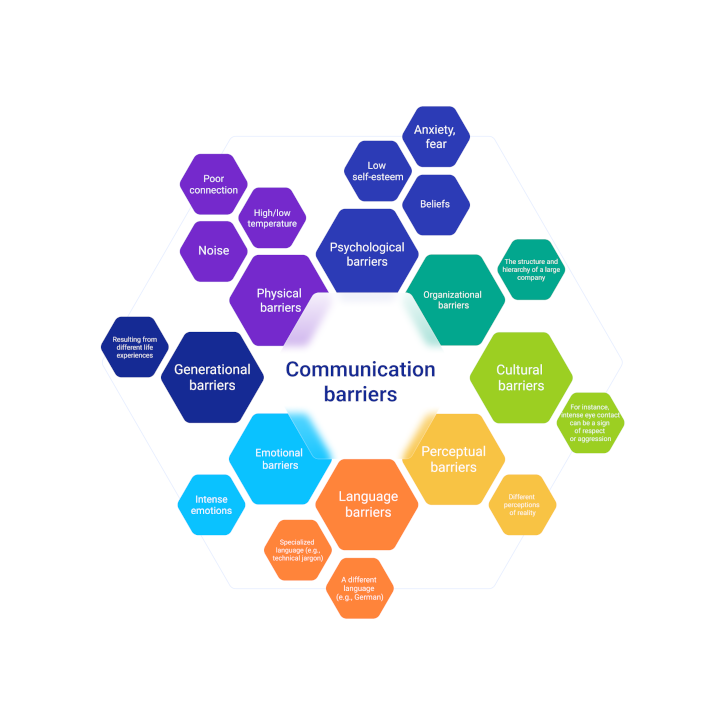Communication is essential to human relationships. It allows us to share thoughts, feelings, and needs, make important decisions, and gain insights into others' perspectives. We communicate daily in diverse settings: at shops, workplaces, schools, and homes. It may seem like a natural and simple aspect of human interaction, given its frequency in our lives. However, is our communication always effective?
Since I love baking cakes, I find it apt to liken communication to creating the perfect meringue. Why? The meringue recipe is simple (or at least it seems so), without complicated ingredients. Yet, I frequently hear from friends that making meringue is tricky — it often doesn't turn out right or has an undesired texture. It seems that having the recipe alone doesn't guarantee success.
Communication is similar — simply conveying a message to someone (performing this seemingly simple action) doesn't mean it will be received as intended. In other words, talking doesn’t ensure mutual understanding. Just as following a meringue recipe doesn’t guarantee the perfect dessert. So, what’s the missing ingredient?
Attentive approach
Just as making a meringue requires focus, communication requires an attentive approach. If we mechanically rush through a meringue recipe without paying attention to details, (e.g., ensuring the sugar dissolves properly while whipping the egg whites), we won't achieve the desired outcome. We will not be eating a delicious dessert. Similarly, communication requires constant checking for understanding and reacting to the feedback. Sometimes, we might mistakenly assume our message is clear, but that may not always be true. Hence, it’s important to carefully observe reactions and adjust our communication accordingly.
Awareness of obstacles we may encounter
While following a meringue recipe, we may face various challenges. For example, I was quite surprised when I first baked meringue in my mom’s oven, assuming the conditions were identical to my own oven, only to find it burned. Upon retrying, I faced the same disappointing result — the result was inedible. Being aware of this limitation, I now make a meringue at home ahead of time when I want to prepare it for my parents.
Similarly, in the communication process, we may confront obstacles that hinder effective connection with others. One easily addressed barrier is noise; simply moving to a quieter environment can alleviate distractions. Another, somewhat more complex barrier is the language difference, which necessitates both parties engaging in dialog, asking questions, and ensuring mutual understanding.
Another obstacle in communication can stem from the self-imposed limitations we place on ourselves. What do I mean? For instance, fear of expressing our opinion or preconceived notions about the listener that prevent us from truly hearing them.
Here’s an example: "This person is too young to understand serious topics."
Someone holding this belief might preemptively assume that a younger conversational partner lacks sufficient knowledge, experience, or capability to comprehend complex issues. Consequently, they might not listen attentively, dismiss the younger person's arguments, or completely disregard their perspective. Overcoming such limiting beliefs largely depends on our willingness to introspect and grow.
Below is a list of fundamental barriers we might face in interpersonal communication, along with examples.

It's crucial to recognize these limitations as the initial step toward overcoming them. Once we understand what hinders us, we can select the right strategies to tackle these barriers. In communication, tools like active listening and the capacity to give and receive feedback play pivotal roles.
Active listening entails giving our conversation partner undivided attention. It involves creating a space where they can freely express their thoughts while demonstrating visible engagement to indicate our understanding.
Giving feedback involves conveying positive or negative observations about someone's behavior. There are several ways to do this, but I believe it's essential to base feedback on factual information. Why? Facts are objective and less prone to subjective interpretations, which helps prevent misunderstandings. One way to prepare feedback is using the 4 steps model:
- Facts – describe the situation objectively, avoiding judgments or personal interpretations.
- Feelings – express how you feel about the particular behavior or situation.
- Consequences – indicate the consequences caused by the described situation.
- Expectations– suggest a solution to prevent a similar situation in the future.
Thanks to skills like active listening and giving feedback, we can reduce many communication barriers. However, it's crucial to understand that simply knowing these concepts isn't sufficient. Effective use comes from practice, learning from mistakes, and reflecting on our experiences.
Experience
Before I mastered baking perfect meringues, I went through many painstaking attempts. I tried different recipes, modifying them until I finally found the right one. Importantly, I didn't give up or get discouraged.
The same applies to effective communication. If you want to communicate effectively, you need to gain experience, practice, try, and not give up. Even if it doesn't work out at first, over time you'll gain more experience and it will become easier.
To sum up, effective communication requires:
- Awareness of the other party
- Awareness of the barriers we may encounter, and awareness of ways to overcome these barriers, as well as the willingness to overcome them
- practice in recognizing barriers, active listening, and giving feedback
At Comarch, we prioritize developing these skills. Last year, we conducted a pilot training on identifying communication barriers and strategies to deal with them. This year, we are continuing with workshops focused on active listening and
feedback skills.